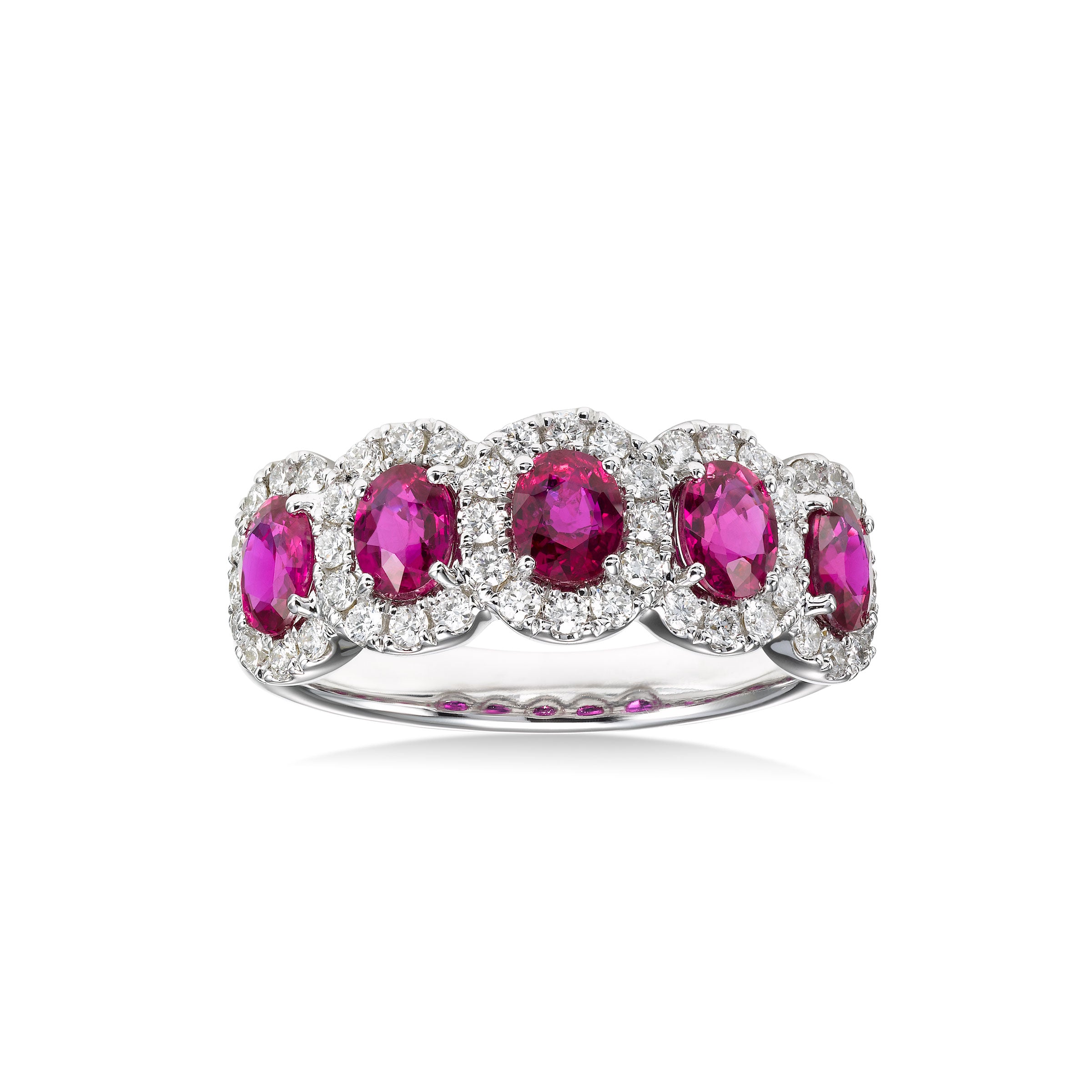Lucky you - born in July - Ruby is your gemstone!
Throughout most of recorded history, ruby has been the world's most valued gemstone. Even diamond was considered common in comparison to the supreme beauty and value of this glowing red gem. Named from the Latin word for its hue, ruber, ruby is the epitome of the boldest of colors: the gem of desire, passion, courage, and emotion.
In 1550, Italian goldsmith Benvenuto Cellini reported that the finest one-carat ruby cost eight times more than a comparable-quality one-carat diamond. Now, depending on many factors, a ruby can be twice the price of a comparably sized diamond. Beautiful, genuine rubies have become less common and more expensive.
Ruby, like sapphire, is the mineral corundum, one of the most durable minerals, a crystalline form of aluminum oxide. Corundum has a hardness of 9 on the Mohs scale and is also extremely tough.



Ruby is most common in oval and cushion shapes. Other shapes may be difficult to find in sizes above a carat. Rubies above five carats are extremely rare and valuable.
 Most natural rubies are heated to improve their color and/or transparency. This is a process that has been perfected over centuries. The very few that are truly unheated should be accompanied by a laboratory report confirming their natural color. Many “fine jewelers” do not even carry natural rubies, instead only offering lab-created stones. Others stock stones that are composed of bits of natural ruby held together in a mosaic by lead-based glass – but only disclosed in fine print.
Most natural rubies are heated to improve their color and/or transparency. This is a process that has been perfected over centuries. The very few that are truly unheated should be accompanied by a laboratory report confirming their natural color. Many “fine jewelers” do not even carry natural rubies, instead only offering lab-created stones. Others stock stones that are composed of bits of natural ruby held together in a mosaic by lead-based glass – but only disclosed in fine print.
At Fortunoff, we search the globe to bring you beautiful, natural rubies created by nature, not in a lab. We don’t sell glass-filled ruby, either. Most of our rubies have been enhanced with traditional heating practices.
For further inspiration, see our ruby birthstone collection.

